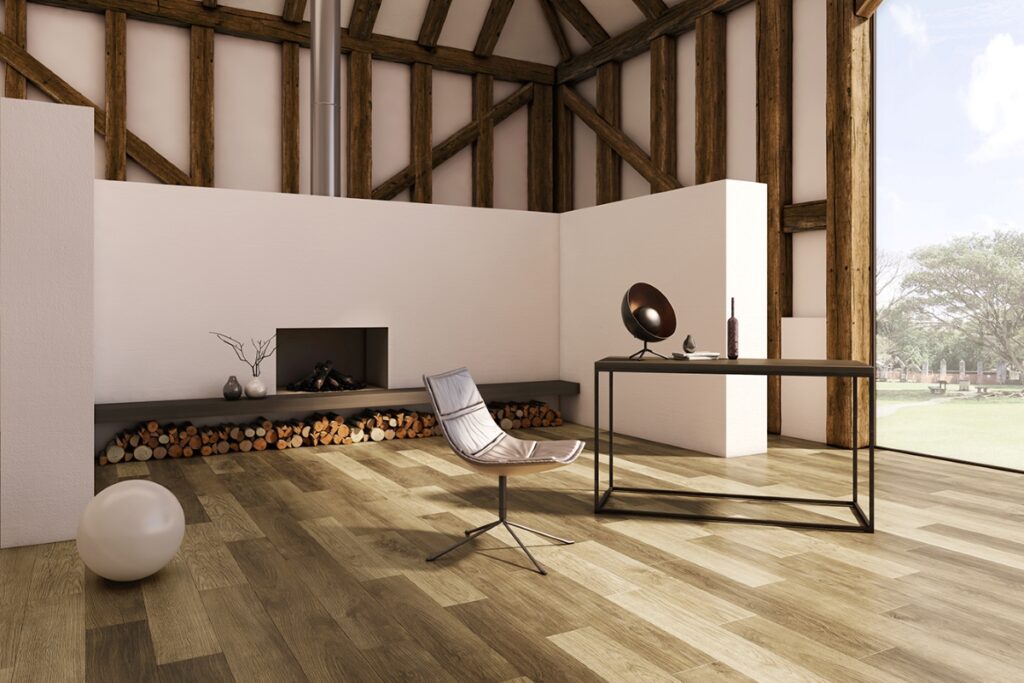For years, the story of vinyl flooring was one of imitation. Its greatest compliment was, “It looks just like wood!” or “I thought it was real tile!” While this was a testament to improving technology, it positioned the material as a mere stand-in, a convincing duplicate of something more authentic. But a new chapter has begun. Today, a new class of material is changing the narrative. Designer vinyl floors are no longer just mimicking; they are innovating, inspiring, and establishing a unique aesthetic that stands firmly on its own merits.
So, what separates basic vinyl from designer vinyl floors? The difference lies not just in quality but in intention. It moves beyond copying nature to interpreting it and, often, inventing something entirely new.
The Palette of Possibility
One of the most significant ways designer vinyl floors break the imitation mold is through color. While traditional vinyl sticks to safe, natural wood tones and stone grays, the designer category embraces a vastly broader spectrum. Imagine floors in deep, moody charcoals, warm terracottas, soft sage greens, or even bold geometric patterns with contrasting colors. This freedom allows homeowners and designers to use the floor as a central element of the room’s design, not just a neutral background. A richly colored designer vinyl floor can set the entire tone for a space, acting as a foundational piece of art.
The Art of Texture and Finish
Texture is where the tactile beauty of designer vinyl floors truly shines. Advanced manufacturing allows for embossing that is deeply realistic or creatively abstract. But more importantly, it allows for texture that complements the design rather than just copying a wood grain.
For instance, a designer vinyl plank might feature a hand-scraped texture that feels authentic underfoot, but the color could be a whitewashed oak that nature never produced. Another might have a perfectly smooth, matte finish that echoes modern concrete, but in a warm, forgiving material that concrete could never be. This combination of unexpected texture with unexpected color is where a unique identity is born. The finish is also key. While high-gloss polyurethane looks on wood can sometimes feel dated, the sophisticated matte and satin finishes prevalent in designer vinyl floors offer a contemporary, understated luxury that is very much its own.

Scale, Shape, and Layout
Innovation in format is another area where these floors excel. We are moving far beyond simple plank and tile shapes. Designer vinyl floors now come in extra-wide planks that create a sense of openness and modernity, a look difficult to achieve with real hardwood. Parquet and herringbone patterns, once the exclusive domain of expensive craftsmen, are now meticulously crafted into vinyl collections, making these classic designs more accessible.
Furthermore, some lines offer unique shapes like hexagons, chevrons, or fish-scale patterns, encouraging installation layouts that are themselves a design feature. The ability to mix planks of varying widths or colors within the same product line allows for custom, curated looks that feel personal and original.
The Foundation of Performance
This bold aesthetic would not be possible without serious performance credentials. The beauty of designer vinyl floors is deeply integrated with their function. The core of these floors is often rigid and incredibly durable, resistant to scratches, dents, and stains. This durability means that designers are not forced to sacrifice beauty for practicality. You can have a light-colored, matte floor without constant anxiety about marks and spills. You can install a beautiful floor in a bathroom, kitchen, or basement—spaces where traditional hardwood would be risky. This liberation from the constraints of more delicate materials is a powerful creative driver.
Building a Cohesive Design Vision
Ultimately, the goal of designer vinyl floors is to provide a cohesive element that ties a room together. In an open-concept living area, a unique vinyl floor can define spaces without using walls. It can complement bold wall colors and statement furniture without competing. Because it is not trying to be something else, it can be exactly what the room needs it to be: a durable, comfortable, waterproof, and stunning foundation that supports the entire design vision.
The evolution is clear. Vinyl flooring has graduated from its role as an impersonator. Designer vinyl floors are now a legitimate and exciting design category, offering a fusion of artistic expression and practical resilience that is uniquely its own. They invite us to look down and see not an imitation of something old, but the invention of something new. They encourage us to think of the floor not as an afterthought, but as a starting point for creativity. In the world of interior design, that is a truly ground-breaking shift.
